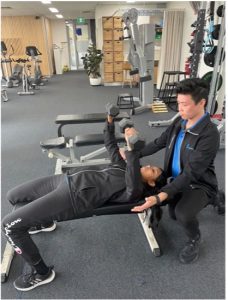Exercise for Healthy Bones
Today, Longevity Exercise Physiology Drummoyne, Edgecliff, Marrickville, Bella Vista, Randwick, Pymble, Balmain, Neutral Bay, Coburg – Melbourne, and Barrie, Ontario – Canada discuss how certain types of exercise can help support healthy bones throughout our lives and help manage conditions including Osteoporosis and Osteopenia.
What is the difference between osteoporosis & osteopenia?
Bones are continually remodelling to ensure that they remain strong. However, Osteoporosis is a condition where our bones become weaker and fragile, increasing the risk of fractures. Osteoporosis is characterised by low Bone Mineral Density (BMD) seen as a T score of ≤ -2.5 in a BMD scan.
Osteopenia is low bone density, with a T score between -1.0 and -2.5. Our Bone mineral density peaks in early adulthood and therefore it is never too early to start exercising to help prevent osteoporosis.

Our bone health is impacted by many factors, including:
- Physical Activity Level
- Nutrition
- Vitamin D deficiency
- Smoking
- Excessive Alcohol intake
- Medications e.g. ADT (used in prostate cancer treatment)
The Role Of Exercise
Exercise plays an important role slowing the rate of bone loss to prevent bone fractures, however it is important to be doing the right type of exercise.
Resistance training to increase muscle strength is vital to help maintain bone density, improve balance and prevent falls. Studies suggest that strength training should be performed at high intensity and with supervision to achieve best results. Resistance exercises that will benefit people with osteoporosis aim to target major muscle groups attached to the hip and spine, such as squats, deadlifts or machine based exercises.

Balance training should also be performed in conjunction with resistance training to help prevent falls, and therefore the risk of fall-related fractures.
Aerobic training is also important to maintain cardiovascular health. However, for people with low bone density, aerobic exercises should be impact loading. This includes exercises such as jumping, skipping, and hopping.

At Longevity Exercise Physiology we work closely with Dietitians to provide comprehensive health care. Our Accredited Exercise Physiologist’s at our Marrickville location have a new healthy program with a local dietitian from Nutritionpath to help clients manage and increase their bone mineral density. This 10-week program focuses on addressing low bone mineral density through both diet and exercise, to give our clients the best chance of managing osteoporosis and preventing fractures.
If you want to engage in an exercise program to help strengthen your bones or manage or osteoporosis, give Longevity Exercise Physiology Drummoyne, Edgecliff, Marrickville, Bella Vista, Randwick, Pymble, Balmain, Neutral Bay, Coburg – Melbourne, and Barrie, Ontario – Canada a call on 1300 964 002.

Written by Isaac Roman
